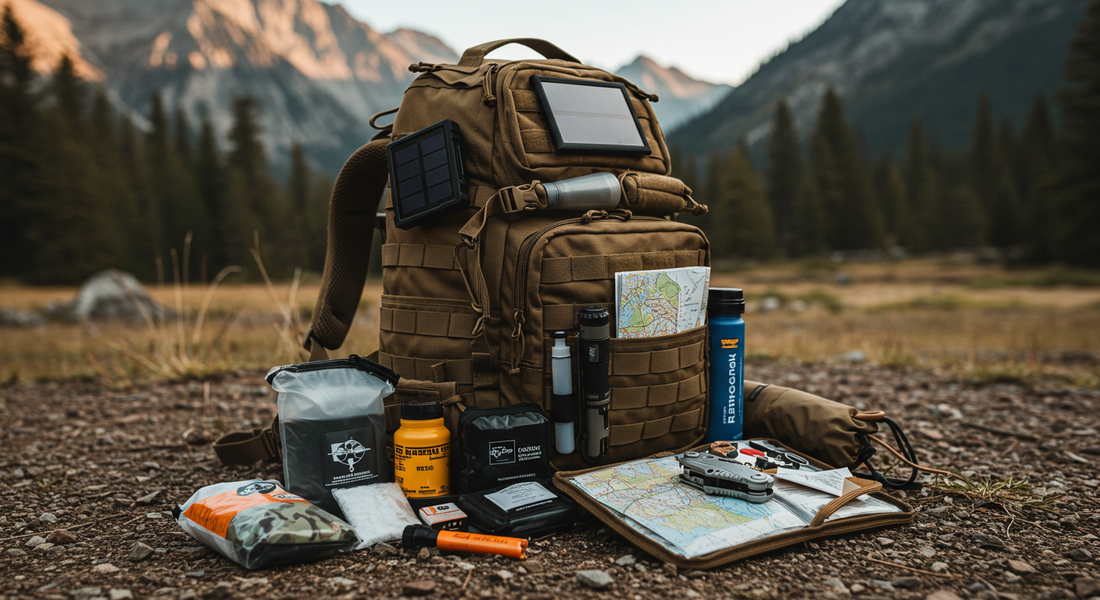
Anatomy of a Bug Out Bag: How to Choose the Perfect Pack for Your Needs
Share

Your bug out bag is more than just a backpack; it's the foundation of your entire emergency preparedness kit. It's the vessel that will carry the gear you need to survive for at least 72 hours. While it might be tempting to just grab an old school bag or a spare duffel, these are simply not designed to withstand the rigors of an evacuation or a survival situation.
A purpose-built pack is designed for durability, comfort under load, and efficient organization. This guide will walk you through how to choose a bug out bag, focusing on the key survival backpack features that truly matter.
Key Factor 1: Size and Capacity
The first decision you'll make is the size of your pack, which is measured in liters.
-
Understanding Liter Sizes:
-
30-40 Liters: A good size for a minimalist 72-hour kit, especially in an urban environment.
-
40-55 Liters: This is the "sweet spot" for most people. It offers enough space for a comprehensive 72-hour kit with room for a few extra comfort items, without being overly bulky.
-
55-70+ Liters: These are larger, long-term packs designed for extended trips. They can become very heavy very quickly and may not be ideal for a rapid evacuation.
-
-
Matching Capacity to Your Plan: The size you choose should directly reflect your emergency plan. If your primary plan is to get to a nearby, well-stocked location, a smaller bag is better. If you anticipate being on the move for a longer period, you'll need more capacity.
Key Factor 2: Frame and Suspension
How a pack carries its load is just as important as how much it can hold.
-
Internal Frame vs. Frameless: A pack with an internal frame (a rigid or semi-rigid sheet inside the back panel) is essential for any bag over 30 liters. The frame transfers the weight of the pack from your shoulders to your hips, which are much better at carrying heavy loads. Frameless packs are lighter but are only suitable for very light loads.
-
Adjustable Straps and a Hip Belt: A quality pack will have adjustable shoulder straps, load lifter straps (at the top of the shoulders), a sternum strap, and a padded hip belt. A properly fitted hip belt should carry about 80% of the pack's weight, taking the strain off your shoulders and back.
Key Factor 3: Material and Durability
A survival pack needs to be tough enough to handle abuse without failing.
-
Understanding Fabric: Look for packs made from high-denier, durable fabrics. Cordura is a well-known brand of fabric that is highly resistant to abrasion and tears. Rip-stop nylon is another excellent choice, featuring a grid pattern of heavy-duty threads that prevent small punctures from turning into massive rips.
-
Zippers and Buckles: These are common failure points. The gold standard for zippers is YKK. They are reliable and far less likely to break under stress. Check that the buckles are made from a thick, durable plastic.
Key Factor 4: Organization and Access
How you access your gear in an emergency is critical.
-
Top-Loading vs. Panel-Loading: Top-loading packs (common in hiking) have a single large opening at the top. Panel-loading packs (often found in the best tactical backpack designs) have a zipper that runs around the front of the bag, allowing you to open it like a suitcase. This makes accessing gear at the bottom of your pack much easier.
-
MOLLE/PALS Webbing: This is a grid of nylon straps (an acronym for Modular Lightweight Load-carrying Equipment) found on many tactical packs. This molle backpack guide tip is simple: it allows you to attach additional pouches and gear to the outside of your bag for ultimate customization.
Conclusion: The "Gray Man" and a Proper Fit
While a tactical-looking bag has its advantages in terms of customization, consider the "Gray Man" theory: choosing a pack in a neutral color (like gray, blue, or black) that doesn't scream "prepper." A high-quality hiking backpack can be just as durable and allows you to blend in more easily during a crisis.
Finally, once you've chosen your pack, learn how to fit it to your body correctly. Adjust the straps so the weight is on your hips, not your shoulders.
